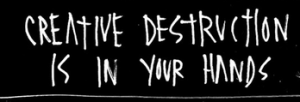Shellfish poisoning, have you ever suffered from it? There is rule that when there is not a “R” in the month you should be more careful on eating clams, oysters, mussels or scallops. Today with more commercial harvesting that risk or rule has been greatly reduced.
I gather in the months of May, June, July and August- the northern hemospheres (usually) warmer months- there is higher potential where algal blooms and also in European climate, some shellfish are less palatable as oysters, for example, are spawning at this time. This raises the risk that can spread toxins and lead to a possible poisoning.
 Now you might be wondering what this has got to do with innovation? Well, I’m off to Singapore for ten days in early May and I certainly will be ‘hitting’ the shellfish buffet but really innovation is top of my agenda for this visit and one thing that I will remind people about is to focus on the “R” in innovation.
Now you might be wondering what this has got to do with innovation? Well, I’m off to Singapore for ten days in early May and I certainly will be ‘hitting’ the shellfish buffet but really innovation is top of my agenda for this visit and one thing that I will remind people about is to focus on the “R” in innovation.
What do I mean by focusing on the “R” in innovation? Continue reading “Putting the “R” into Innovation to shed legacy”




